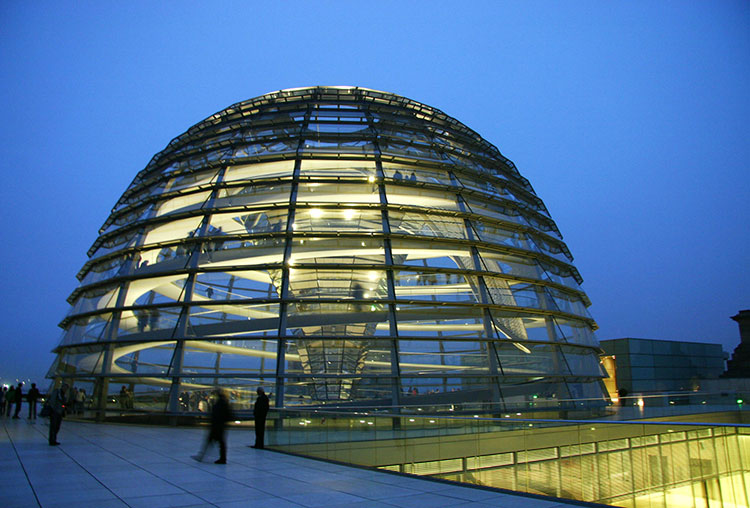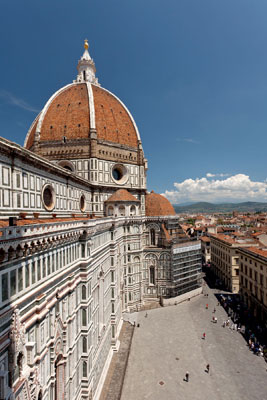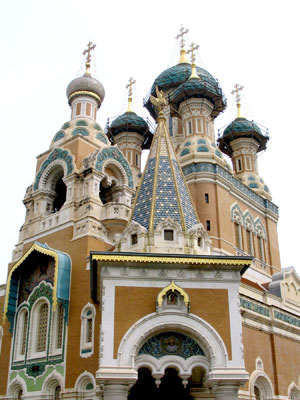New in the UK and Europe in 2013
This item appears on page 58 of the April 2013 issue.
The following are excerpts of several recent articles by Rick Steves.
Great Britain
I’ve long been disappointed in Britain’s inability to see that tourist information is an investment in an important industry that brings in business. Rather, Britain views tourist info offices each as businesses in their own right, having to scramble to stay afloat like the countless attractions they’re supposedly designed to serve.
As a result, tourist offices across the country are either closing or morphing into shops peddling tourist activities, information and knickknacks for a profit. The biggest hit is in LONDON, where the Britain and London Visitors Centre near Piccadilly Circus has closed. Now the only publicly funded (and therefore impartial) tourist office is the City of London Information Centre, across from St. Paul’s Cathedral.
Visitors hoping to capture some of the Olympic afterglow can soon visit the new Queen Elizabeth Olympic Park. The northern part will open on July 27, on the one-year anniversary of the opening ceremonies, and will feature footpaths, playgrounds and picnic-friendly greens. The southern half, highlighted by the twisty red Orbit (observation tower), is slated to open in spring of 2014.
Travelers interested in royalty will delight in the newly refurbished Kensington Palace (phone 0844 482 7777 or, from outside the UK, +44 [0] 20 3166 6000), which now hosts a worthwhile series of exhibits on its most notable past residents, including William and Mary, and the Hanovers (the “Georges”). The highlight is the exhibit on Queen Victoria, who was born and raised in this palace.
The wizarding world is abuzz over the opening of the “Making of Harry Potter” studio tour (phone 08450 840 900) in LEAVESDEN, a 20-minute train ride from London. The attraction lets Potter-philes see the actual sets and props used in the films, along with exhibits about how the special effects were created. Visitors must book a time slot in advance, and it’ll be smart to do so as far ahead as possible.
In BATH, a 90-minute train ride west of London, visitors to the Roman and Medieval Bath can now avoid lines — worst on Saturdays and any day in summer — by buying advance tickets online.
Along England’s southern coast, the PORTSMOUTH Historic Dockyard complex (phone +44 23 9272 8060) will soon welcome a new museum displaying the 16th-century warship Mary Rose (Henry VIII’s favorite ship) and numerous Tudor-era items found inside the wreck.
Renovations continue at the stately York Minster (phone +44 [0] 844 939 0011, fax +44 [0] 1904 557201). While the Great East Window remains behind scaffolding, several examples of the window’s stained glass can be viewed up close in the Orb, a space-age-looking vessel located inside the Minster.
Italy
ROME has made visiting the Vatican Museum easier. You can often buy same-day, skip-the-line tickets from the tourist information office in St. Peter’s Square; it’ll cost the same price you’d pay if you had reserved online (ticket, €15 [near $20] plus reservation fee of €4).
Massive crowds line up to see FLORENCE’s cathedral, the Duomo, which is free to enter. Here’s how to skip the line: if you’re already planning to visit the cathedral-related sights — the Duomo Museum, Baptistery and Campanile — that require a combo-ticket to see, buy your ticket first at the less-crowded museum. You’re allowed to use it to enter through the cathedral’s exit, bypassing the lines at the front door.
Florence’s Uffizi Gallery is still undergoing a massive, years-long renovation that bodes well for travelers. Although a few rooms are off-limits, many more rooms have been opened to the public, such as the Caravaggio Rooms and the new “Foreign Painters Section,” featuring mostly Dutch/Flemish painters (including Rembrandt), with some Spanish and French artists.
Also in Florence, Lorenzo Ghiberti’s Renaissance-era Baptistery doors — featuring the original 10 bronze panels from the “Gates of Paradise” (1425 to 1452) — have been newly restored and are now back on display at the Duomo Museum.
From April through September, Florence’s best late-hours sightseeing is at the Palazzo Vecchio, the fortified palace where the Medicis ruled. The sight generally stays open until midnight. Also, the Palazzo Vecchio’s tower has reopened to visitors, providing a great cityscape view.
Florence’s Galileo Science Museum, which was recently renovated, has rearranged and dramatically updated its exhibits. Engaging video screens (in English) have been added to many rooms to help illustrate inventions and scientific principles.
In VENICE, the Accademia, which is known for its great collection of Venetian Renaissance art, is open but still in a constant state of disarray, with a major expansion and renovation dragging on for years. The locations of paintings aren’t yet set. The upside is that crowds have died down, so there’s no longer a need to reserve a ticket in advance.
Formerly presented every other year, the Venice Biennale, a world-class, contemporary fair, is now an annual event. It alternates between visual art in odd years and architecture in even years. The exhibition spreads over the Arsenale and Giardini park and usually runs from June through November.
In NAPLES, it’s no longer necessary to make an appointment to see the Archaeological Museum’s Secret Room, with its assortment of erotic frescoes, pottery and statues that once decorated bedrooms and brothels at Pompeii and Herculaneum.
The CINQUE TERRE, Italy’s picturesque Riviera, is back to normal after two of its towns were badly damaged in a flood in the fall of 2011. The towns and nearly all the trails of the region are once again ready for prime time. A handy (but pricey) new parking garage has opened at nearby La Spezia’s train station, making it easier and safer for day-trippers to leave their cars and hop the train to the Cinque Terre.
To generate funds during a time of economic uncertainty, more and more cities — such as Venice, Florence, Padua and Rome — are levying a tax on hotel rooms. Visitors must pay the tax in cash at checkout. It varies from €1 to €5 per person per night and is based on how many stars the hotel has under the government rating system.
France
Increasingly, attractions in PARIS and beyond are adding online ticketing, which lets visitors print a receipt that serves as an entry pass. Smart sightseers can now book ahead and avoid lines at destinations such as the Eiffel Tower, the Musée d’Orsay and Monet’s gardens at Giverny as well as for activities such as Seine River cruises and church concerts.
At the Louvre, video guides on portable consoles (rental, €5 [$7]) provide commentary on about 700 masterpieces. The new Islamic art section — with its eye-catching glass roof — is installed in the Cour de Visconti courtyard of the Denon wing.
Other Paris museum openings and closings include the recently refurbished Impressionist galleries of the Musée d’Orsay. After a bit of a shakeout, paintings have settled into permanent locations, offering a fresh view of this rich trove of masterworks.
The long-closed Picasso Museum should finally reopen in summer 2013. Meanwhile, the Rodin Museum is undergoing a major renovation until 2014. While statues will be moved around and some rooms will close altogether, the museum’s lovely gardens will remain open.
There are several intriguing new tour options in Paris. Classic Walks offers new Easy Pass tours that allow you to skip the lines at major sights such as the Louvre and the Eiffel Tower. TripUp’s pedicab tours, helmed by hard-pedaling drivers, are a charming way to experience Paris at a snail’s pace. If rumbling around Paris in a funky old Citroen 2CV convertible à la Inspector Clouseau sounds like your kind of fun, check out Paris Authentic or 4 Roues Sous 1 Parapluie.
The city’s Velib bike program is now more accessible to visitors, who can buy a one- or seven-day subscription online. This is a fun way to tootle between sights. The first 30 minutes of any trip are included with your subscription; after that, there’s a small fee for each additional 30 minutes.
At VERSAILLES — the number-one side trip from Paris, just a half-hour away — some rooms of the Queen’s Wing of the main palace may be closed for renovation in 2013. A new shuttle bus is whisking visitors from the Versailles train station to the Trianon Palaces and the Domaine de Marie-Antoinette, on the far side of the palace’s vast grounds (www.phebus.tm.fr [French only]).
At MONT-ST-MICHEL, the causeway that has long brought travelers to the dramatic island abbey was closed to car traffic in 2012 (and will eventually be replaced by a new bridge). Instead of parking along the causeway, drivers now leave their cars on the mainland and either walk, ride a free shuttle or hop a horse-drawn wagon to the island.
Down south, in Provence, the Ancient History Museum in ARLES is showing off a recently discovered Roman barge and much of its cargo (exhibit opening in late 2013). This almost-100-foot-long vessel and more than 3,000 ceramic jugs and artifacts were pulled from the Rhône River in 2010.
Along the Riviera, the big news in NICE is the reopening of its 100-year-old onion-domed Russian Orthodox Cathedral, claimed by many to be the finest Orthodox church outside Russia.
Through 2014, you won’t be able to cross the Alps from France to Italy by cable car, as the lift from Helbronner Point (near Mont Blanc) down to the Italian valley station of La Palud is closed for renovation. (You can still side-trip to Italy by bus from Chamonix to Aosta.) Gondolas will continue operating on the Mont Blanc lift up from Chamonix to the Aiguille du Midi and over to Helbronner — but only in summer and, even then, only in good weather.
The Alsace’s top art sight, COLMAR’s famed Unterlinden Museum, is scheduled for renovation sometime in 2013. When that happens, the jewel of the museum, Grünewald’s gripping Isenheim Altarpiece, will likely move to the nearby Dominican Church, where it should remain on display while the museum is under construction.
Germany
Getting into the Reichstag, BERLIN’s parliament building (with its striking, 155-foot-tall glass cupola), has been difficult over the last few years due to changing security and entrance procedures. Things have finally settled down and the process is clear: to visit the dome, it’s best to make a free reservation online several days in advance. Once you have a reservation, simply report to the visitors’ center at the appointed time.
In MUNICH, sights are closing and opening. In the Residenz, the downtown palace of the Bavarian kings, the mythological scenes decorating the Halls of the Nibelungen are not on view, undergoing restoration at least through 2014.
Reopening in Munich is the Lenbachhaus, home to the world’s largest collection of early Modernist Blaue Reiter paintings. The refurbished galleries now also host a first-rate collection of international contemporary art.
In Bavaria, the new Museum of the Bavarian Kings (phone +49 [0] 8362 926 46 40, fax 926 464 30) occupies a grand former hotel on the shore of the Alpsee, adjacent to the fairy-tale Hohenschwangau and Neuschwanstein castles. If you have free time between your castle tours and a higher-than-average curiosity about arcane Teutonic dynasties, this might be worth a stop. For most visitors, though, the highlight is the view of the lovely lake from the museum’s top floor.
St. Kilian’s Cathedral — the main church in WÜRZBURG and the fourth-largest Romanesque cathedral in Germany — has reopened following a €3.2-million renovation. The ornate stucco decoration inside has been spiffed up and the cathedral’s two organs restored.
Austria
At St. Stephen’s Cathedral in VIENNA, visitors can ride an elevator up to the newly opened Cathedral Treasury. The substantial treasures of the cathedral had been ignored in the nearby (and outmoded) cathedral museum, so they’ve been moved into the church, filling a space high above the nave on the west portal wall.
The Kunsthistorisches Museum in Vienna is reopening its Kunstkammer (Cabinet of Wonders) exhibit to show off the lavish curiosities the Habsburg emperors gathered to impress their friends and enemies. Meanwhile, in the upstairs gallery known as the Gemaldegalerie, curators have been busily rearranging the paintings.
Vienna’s most impressive and crowded palace, Schönbrunn, now has an online ticketing system. It’s possible to avoid the admission lines there by reserving a timed-entry ticket at the palace’s website in advance.
Vienna’s train stations will be in disarray for the next few years, as the city rebuilds its central station and remodels several others. The wonderful Westbahnhof (West Station) has already been beautifully renovated, with the 1950s shell now filled with a modern mall of services, shops and eateries.



